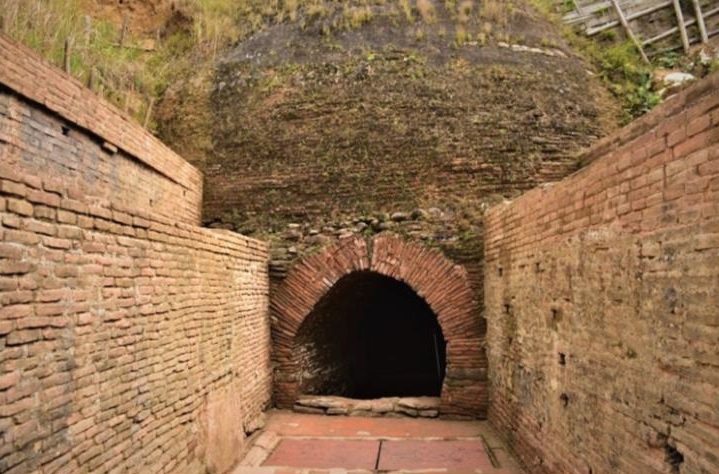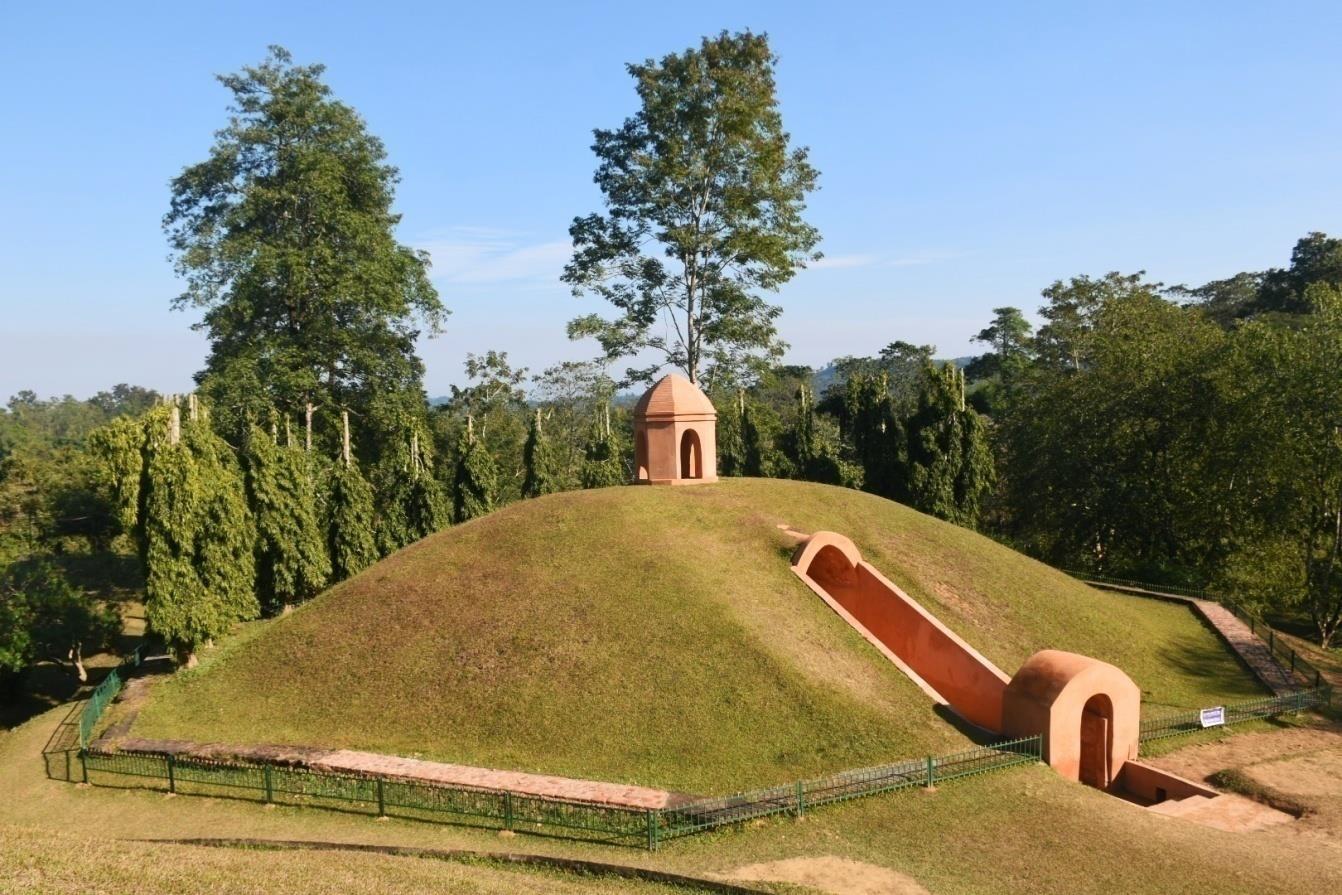Ahom Maidams of Assam: Silent Guardians of a Glorious Past
Nestled within the verdant landscapes of Assam, the Ahom Maidams stand as solemn sentinels of a bygone era, offering a glimpse into the rich and complex history of the Ahom dynasty. These majestic burial mounds, scattered across the state, are not just relics of the past but also symbols of the cultural and architectural brilliance of the Ahoms. For visitors and history enthusiasts alike, a visit to the Ahom Maidams is a journey through time, where the whispers of the past echo in the serene surroundings.
The Ahom Dynasty: A Brief Overview
The Ahom dynasty, which ruled Assam for nearly 600 years from 1228 to 1826, is one of the most significant periods in the history of the region. Founded by Sukaphaa, a Tai prince from Mong Mao (present-day Yunnan in China), the Ahoms established a powerful and culturally rich kingdom that resisted numerous invasions, including those by the mighty Mughal Empire. The Ahoms are credited with unifying Assam, developing a sophisticated administrative system, and fostering a unique culture that blended indigenous Assamese traditions with Tai influences.
The Significance of the Maidams
The Maidams are royal burial mounds, akin to the pyramids of Egypt, where the Ahom kings, queens, nobles, and high-ranking officials were interred. These structures are not just graves but are considered sacred spaces that reflect the Ahoms' belief in life after death and their reverence for ancestors. Each Maidam was constructed meticulously, with the burial chamber containing the remains of the deceased, along with their personal belongings, weapons, and sometimes even servants, to accompany them in the afterlife.

Charaideo Maidams: The Royal Necropolis
Among the numerous Maidams scattered across Assam, the Charaideo Maidams are the most famous and historically significant. Located about 30 kilometers from Sivasagar, Charaideo was the first capital of the Ahom kingdom and is often referred to as the "Pyramids of Assam." The site houses around 150 Maidams, although only about 30 have been explored and preserved.
The architecture of the Charaideo Maidams is a testament to the Ahom's engineering prowess. These mounds are constructed in a hemispherical shape, with a vaulted chamber underneath, where the royal remains were placed. The exterior was often adorned with intricate carvings and sculptures, though many of these have been lost to time.
Other Notable Maidams in Assam
While Charaideo is the most renowned, there are other significant Maidams across Assam that are worth exploring:
- Joysagar Maidams: Located near the Joysagar Tank in Sivasagar, these Maidams are another important site, reflecting the grandeur of the Ahom funerary architecture.
- Rangpur Maidams: Situated close to the historic Rang Ghar, these Maidams are smaller but no less significant, offering insights into the burial practices of the lesser nobility and officials of the Ahom court.
- Gaurisagar Maidams: Near the Gaurisagar Tank, these Maidams are relatively less explored but hold immense historical value, particularly for understanding the burial customs of the Ahom queens and princesses.
Cultural and Architectural Significance
The Ahom Maidams are not just burial mounds; they are a unique blend of Tai-Ahom and indigenous Assamese architecture. The hemispherical shape of the mounds is believed to represent the womb, symbolizing rebirth and continuity of life. The underground chambers were often elaborately decorated, and the practice of burying personal belongings with the deceased indicates the belief in a life beyond death.
The construction of these Maidams also highlights the advanced engineering skills of the Ahoms. The mounds were built with layers of earth, clay, and bricks, ensuring their longevity. Despite the passage of centuries, many of these structures have withstood the test of time, although they have suffered from natural decay and human neglect.
Preservation Efforts and Challenges
The Ahom Maidams are a crucial part of Assam's heritage, but they face significant threats from natural degradation, unauthorized excavations, and lack of proper preservation efforts. The Archaeological Survey of India (ASI) has taken steps to preserve some of the Maidams, particularly at Charaideo, but much more needs to be done to protect these historical treasures.
Local communities, historians, and conservationists have been advocating for the inclusion of the Charaideo Maidams in the UNESCO World Heritage Sites list. This recognition would not only help in the preservation efforts but also bring global attention to these remarkable structures.

Visiting the Ahom Maidams
For visitors interested in history, architecture, and culture, a visit to the Ahom Maidams is a must. The serene environment, combined with the historical significance of these sites, offers a unique experience. The best time to visit is during the winter months when the weather is pleasant, making it ideal for exploring these ancient mounds.
While Charaideo is the most accessible and well-preserved site, those with a deeper interest in Ahom history may also explore the other Maidams scattered across Sivasagar and its surrounding areas. Guides and information boards are available at some sites, offering insights into the history and significance of the Maidams.
Conclusion
The Ahom Maidams are more than just burial mounds; they are a testament to the rich history, cultural heritage, and architectural brilliance of the Ahom dynasty. As silent guardians of a glorious past, these structures remind us of the importance of preserving our history for future generations. For those seeking to explore Assam's history, a visit to the Ahom Maidams is an enriching and enlightening experience, offering a deep connection to the region's royal legacy.
Click here to download a brochure on Maidams.













